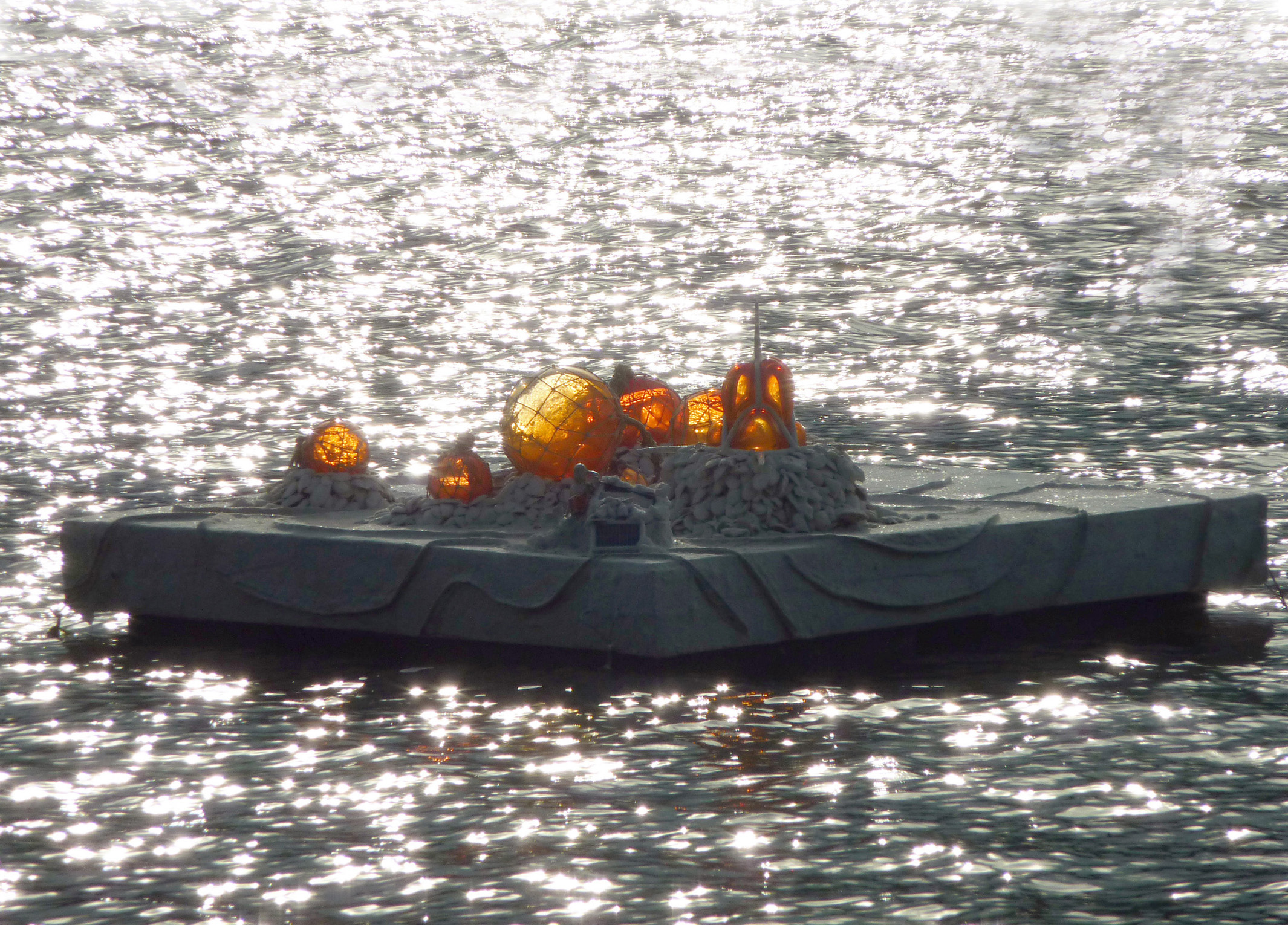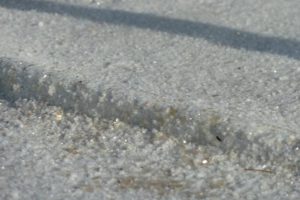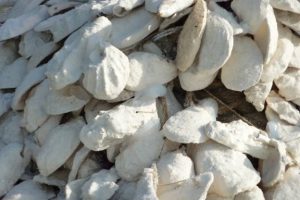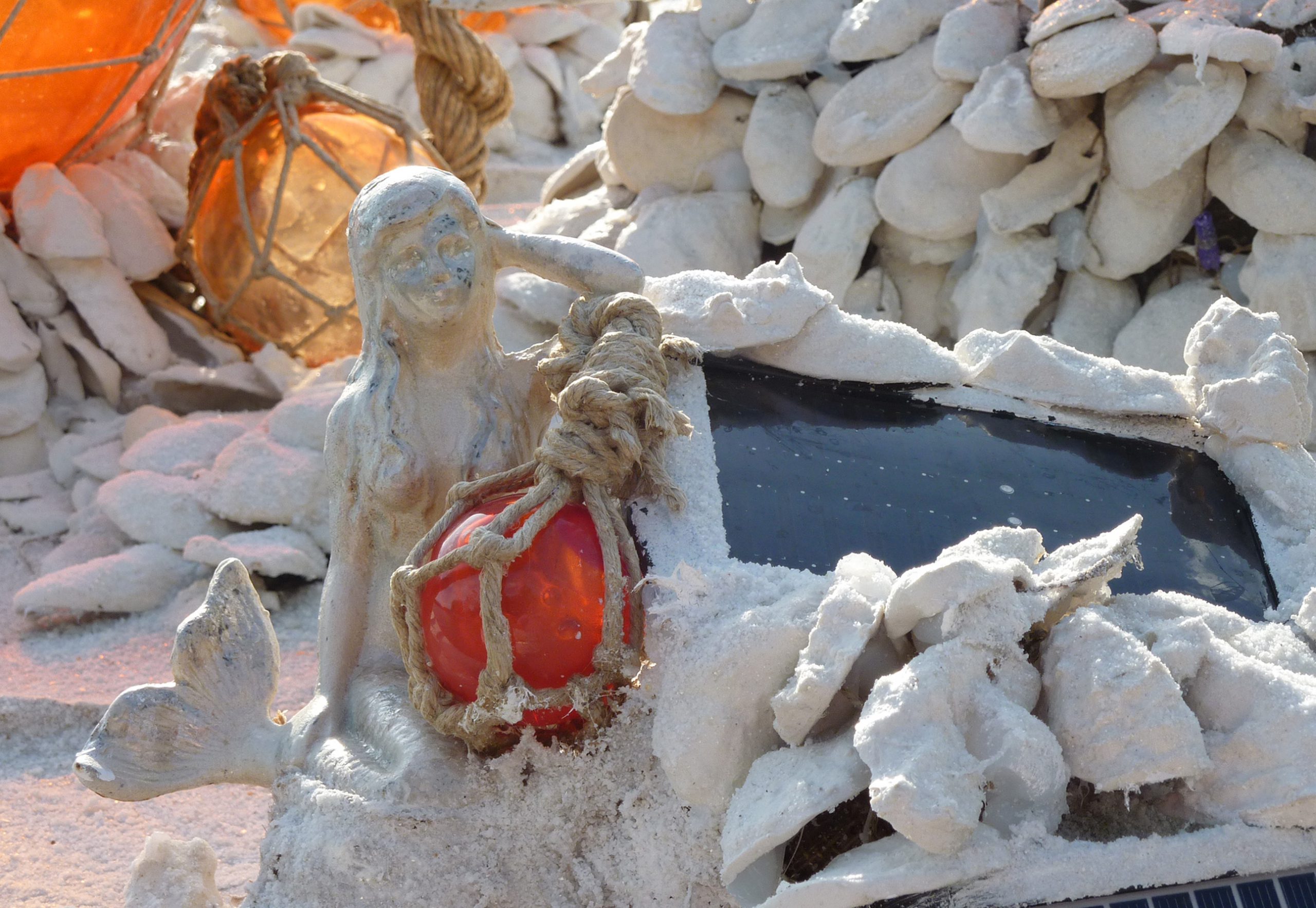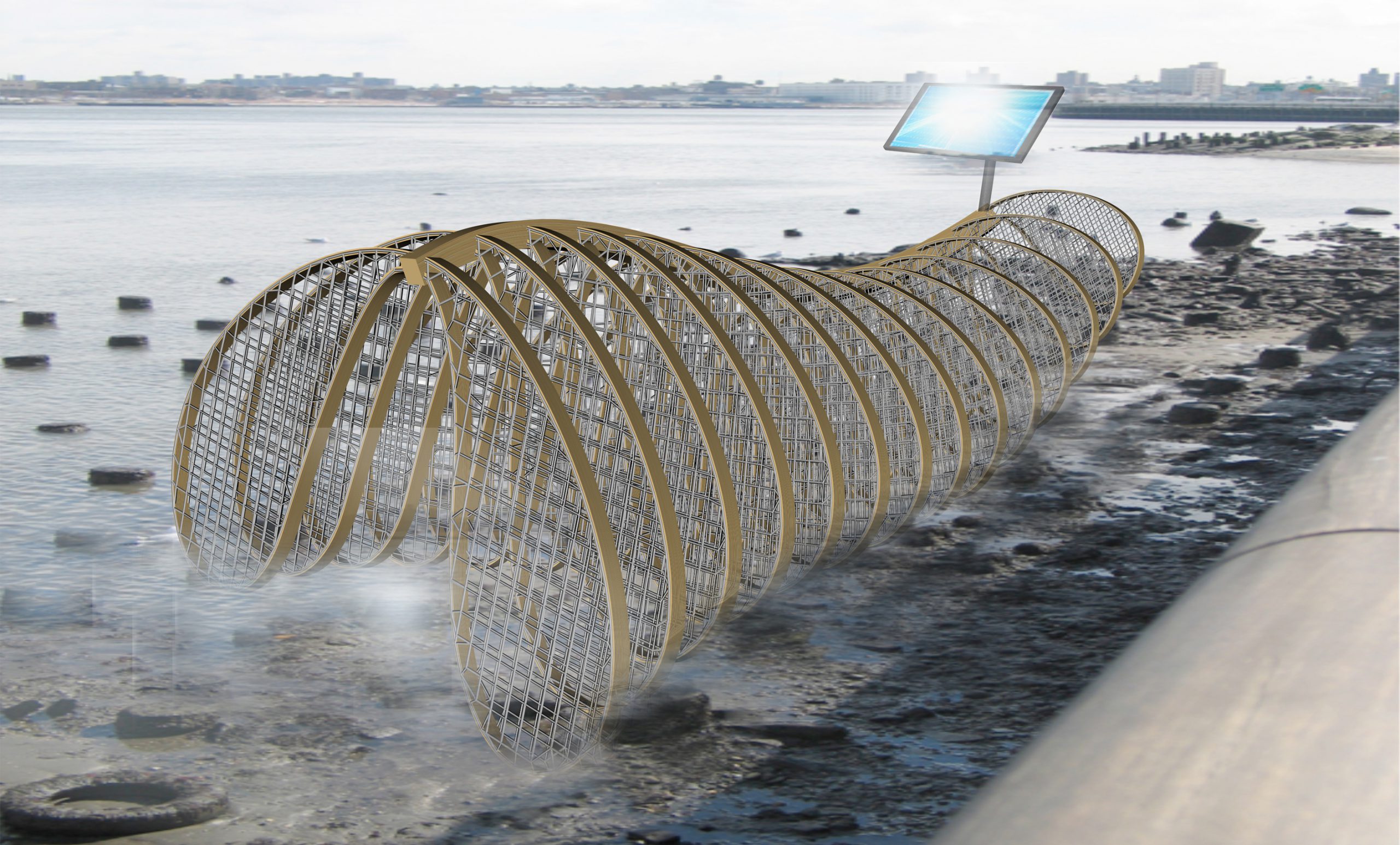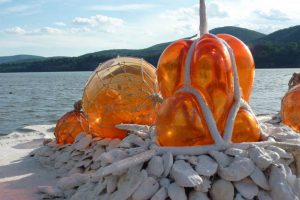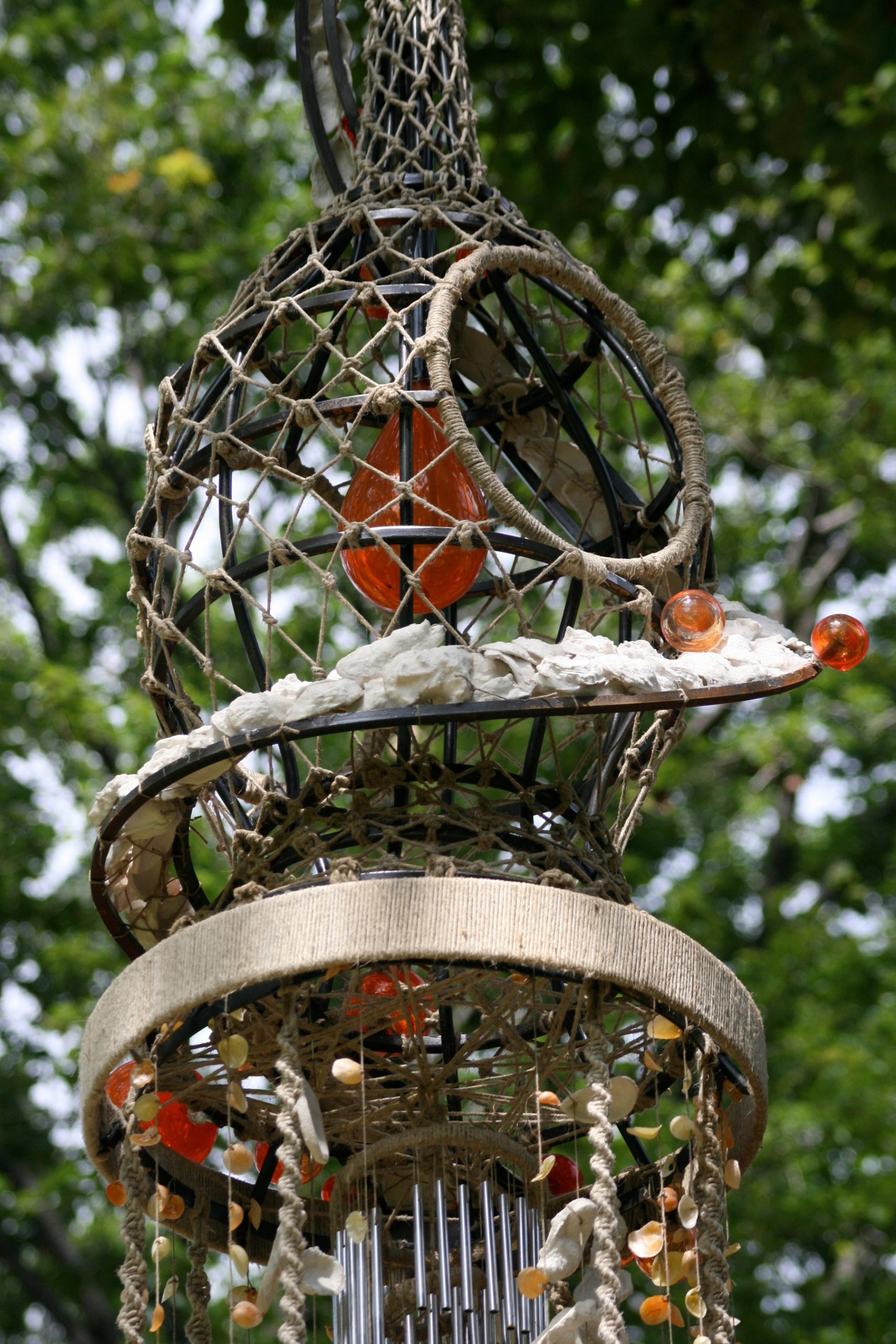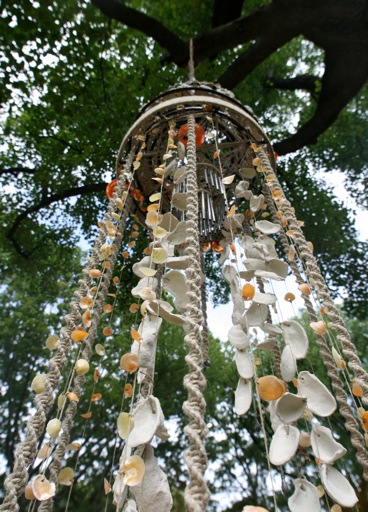
Mara G. Haseltine, geotherapy sculptor, answers questions regarding her sculpture Oyster Island*currently anchored in the Hudson River of Garrison New York, until Oct 10, 2010
Question: What is the concept of Oyster Island?
MGH: Oyster Island is one a series of sculptures based on research I have done over the past several years on restoration of reefs, both oyster and coral. My reef work is functional, aesthetic and educational. These works are all works of geotherapy, intended to heal the planet. Works in this set include Oyster Sweet Spot (currently on display on Governor’s Island), Oyster Island, Gill Reef and Solar Powered Oyster Reef sited of College Point, Queens.
If submerged, all of these sculptures would function as substrates for aquatic life. The materials used are important. Not only are they environmentally compatible, they meet the strictest requirements for non-polluting non-toxic materials for aquatic environments, in some cases they actually stimulate attachment and growth of oyster and coral.
The sculptures are both functional and educational. The viewer learns by interacting with the work. Appreciation of each sculpture carries with it the scientific and technical nature of aquatic reefs and their restoration. Visitors learn about the environment and materials through physical as well as visual interactions with the sculptures.
These are public sculptures, meant to be seen and enjoyed in by all walks of life. There is a fairy tale quality to the work intended to entrance and engage children and through the children their parents. The materials are resonant to both the eye and imagination. They glow, sparkle and tinkle. To understand the substance of these works is also to understand much of the nature and science that informs them.
Oyster Island: Floating in the Hudson
Question: Please describe the materials you use in more detail.
MGH: I do not use materials that might be harmful to the environment. You might be surprised to know that concrete and sea water is not always a happy mix. I also avoid the use of plastic.
I do use materials that have been proven to be environmentally friendly as they either are organic and decay over time, or have been shown to be inert in deep sea environments or thousands of years.
Crushed marble is a major component of Oyster Island. It coats the exterior surface of the platform and the individual porcelain oyster shells as well. I often add mica powder for added sparkle. Marble is calcium carbonate, the same substances that comprises the bulk of oyster shells. It is a natural compound formed from the sea itself. Crushed marble provides an ideal surface for the attachment of oyster larvae and a sustainable form for the creation of a new reef.
Crushed marble and mica surface of Oyster Island
I also use porcelain. The “oyster shells” on the surface of the work are cast porcelain replicas. It is forbidden to use actual oyster shells in New York waters for fear of infection. Unglazed porcelain is highly resistant to degradation by sea water. Porcelain pottery has been recovered intact after being immersed in sea water for thousands of years.
Porcelain oyster shells dusted with crushed marble
Another favorite material is glass. Glass is sea sand transfigured. It is aesthetic. Glass can assume an endless variety of forms and is environmentally friendly. Eventually it is ground to the grains of colored sand.
The hemp I use to bind the structures is a natural fiber. Hemp is resistant to degradation in sea water. That is why it was popular in seagoing vessels. However, hemp does decompose slowly in sea water over time, leaving no permanent residue.
I have added an additional feature to Oyster Island, a small solar power panel that illuminates the structure at night. This is a reminder that while we are creating new habitable aquatic environments we must be careful of our ultimate source of energy. The damage done to the gulf by the recent oil well leak emphasizes the need for alternative clean energy sources.
Mermaid with solar cell
The platform on which Oyster Island floats is wood, another biocompatible, slowly degrading natural material.
Question: Why the orange color?
MGH: Orange is a healing color. In Hindu mythology orange is the color of the healing chakra. It is a generative color. My work is meant to heal the earth and the seas-geotherapy. Orange is a warm and joyous color.
Question: Does Oyster Island reference antecedents?
MGH: Yes. Reference is made to Japanese rock gardens. Negative space is an integral part of the work. Each object of the sculpture is its own island. The forms radiate from each other, much the way water ripples on a pond. The folds on the lower edge of the platform mimic the rippling water below.
The porcelain shells reference the importance of mollusks throughout evolution. Some are cast from the forms of fossil shells hundreds of millions of years old. Some are casts of contemporary oyster shells harvested from distant seas. Some are patterned on shells of the oysters of New York Harbor and the surrounding waters themselves.
The use of minor amounts of metal is also a reference to a mineral accretion process I use. In this process a mild electric current, generated by wind, solar or wave action, is passed through the metal. As a result, calcium carbonate from the sea accretes around the metal, sealing it and providing an ideal surface for oyster and coral attachment and growth. This process is part of the sculpture Solar Powered Oyster Reef installed off College Point, Queens.

Solar Powered Oyster Reef: College Point, Queens
Mineralization of sea salts is an integral part of the Gill Reef design as well.
Design for Gill Reef
Gill Reef: Sculpture, New School Art Gallery, Manhattan
Question: How did you determine that the materials you use are compatible with the sea?
MGH: In the course of planning these works I consulted with marine biologists and ecologists. In fact, scientists from the Department of Environmental Conservation of New York City visited my studio in the formative stages of the work. We discussed how to develop biocompatible materials that would last for centuries and that could be safely incorporated into reefs.
Question: Is there a particular meaning to the actual forms you chose?
MGH: Many of the forms make specific reference to the exterior shells of photo- plankton. These small marine creatures play a critical role in the biosphere, both fixing carbon and producing oxygen. Almost half of the oxygen of the planet is produced by photosynthesis by these tiny marine creatures. I am creating art as part of an international effort to draw attention to these important organisms that are threatened by the increasing acidification of the seas, a direct consequence of increased atmospheric carbon dioxide. The glass tower is specific reference both to one of these structures as drawn by Ernst Haeckel about one hundred years ago and to the tower of the Chrysler building, a New York City landmark.
Tower on Oyster Island
Question: What is the significance of the mermaid with the solar panel?
MGH: Mermaids evoke the romance and mystery of the oceans, and are often referred to in fairytales and sea lore. Their half human form reminding us that we ourselves are water based creatures as well. Mermaids are also guardians of the oceans; in this sculpture she is guarding the renewable power source as well as if illustrating a way out of energy independence on oil. With these works I consider myself a working mermaid, they are gifts to the sea in the sense that I hope they inspire people to learn more about how to take care of our oceans.
When we assembled Oyster Island on the grounds of the Garrison Arts Center, children flocked about us. They loved learning about the materials and were intrigued by the mermaid. One even wrote us a fan letter. Women with their children often gather under Oyster Sweet Spot that hangs from an ancient tulip tree on Governor’s Island.
Detail Oyster Sweet Spot: Governor’s Island, New York
Question: Is the site important for the work?
MGH: Oyster Island and Oyster Sweet Spot pieces are site specific. They are both sites of great natural beauty. They both recall an earlier times in the history of the City and its waters. On Governor’s Island the tinkle of the sculpture’s wind chime replaces the ring of the cellular phone. Oyster Island floats opposite West Point, which from this perspective looks like a castle of old. One of the shapes of Oyster Island reflects a nearby gazebo. Both places are romantic places. The pieces could be moved but to locations that evoke a similar mood.
Question: Why is one sculpture suspended over water and the other over air?
MGH: Both sculptures could be submerged to create available habitats for oysters. Both are placed to interest and to attract the public. The suspended nature of both sculptures refers both to the natural flow needed to sustain life and to the fact that oyster restoration is a work progress
Detail: Oyster Sweet Spot
Question: what was the selection process to be included in the exhibits?
MGH: Each year the Garrison Art Center sponsors a summer exhibit of sculpture at Garrison’s Landing off Depot Road, just across from the train station. The show is crated and I was selected.
The installation on Governor’s island is sponsored by the Sculptor’s Guild. It is juried. Enchanted Oyster Sweet spot is one of twenty works selected.
Detail: Oyster Sweet Spot
Question: Thank you.
MGH: You are welcome.
*The full name of Oyster Island is: Oyster Island, A Perfect Submersible Substrate for Future Aquatic life.
